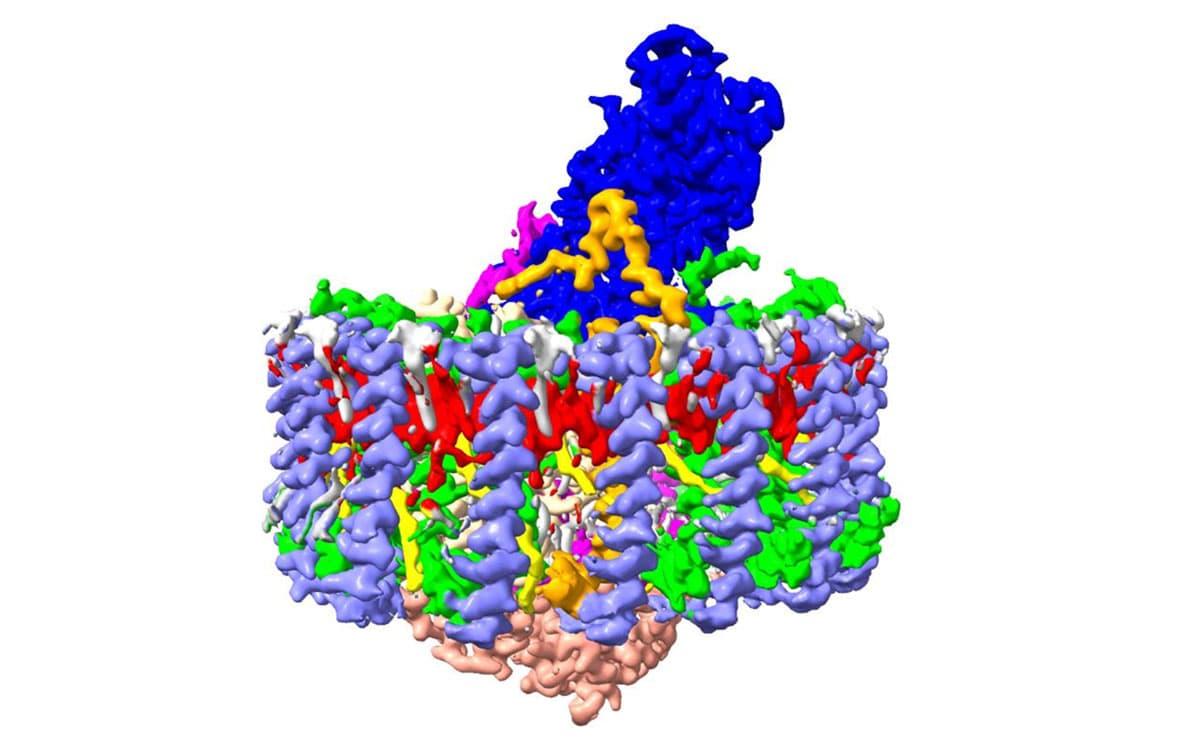Research News
Photosynthetic Mechanism of Purple Sulfur Bacterium Adapted to Low-Calcium Environments

Purple sulfur bacteria (PSB) convert light energy into chemical energy through photosynthesis. Interestingly, certain species can photosynthesize even in environments with low-calcium levels. Using cryo-electron microscopy, researchers from University of Tsukuba unveiled the structure of light-harvesting complexes and elucidated the mechanism that facilitates photosynthesis under low-calcium conditions.
Tsukuba, Japan—Photosynthetic bacteria, unlike plants, do not generate oxygen as a photosynthetic byproduct because they use hydrogen sulfide instead of water to convert solar energy into chemical energy (electrons). This process is orchestrated by a protein complex, the light-harvesting 1-reaction center (LH1-RC). Numerous PSB thrive in calcium-rich environments, such as hot springs and seawater. In the three-dimensional LH1-RC structure, the LH1 antenna protein is typically associated with calcium. However, the photosynthetic mechanism remains elusive in Allochromatium vinosum, a model species of autotrophic bacteria capable of thriving in low-calcium or soft-water environments, as hypothetically, calcium is not involved in the photosynthetic process in this model.
Using cryo-electron microscopy, the researchers revealed the LH1-RC structures of this model species at a resolution that enabled individual amino acid visualization. These observations revealed calcium binding only at six specific sites in the LH1 subunit. In contrast, the closely related thermophilic bacterium Thermochromatium tepidum displayed calcium attachment across all 16 LH1 subunits, indicating a calcium binding dependence on the amino acid sequence pattern. These results imply an evolutionary adaptation in this species, enabling it to bind trace amounts of calcium in low-calcium environments, thereby improving its thermal stability for photosynthesis.
These findings would potentially advance the efficient use of solar energy, and contribute to environmental protection, and highlight the capability of certain species to conduct photosynthesis in freshwater while detoxifying hydrogen sulfide, which is toxic to numerous organisms, into sulfur.
###
This research was partially supported by Platform Project for Supporting Drug Discovery and Life Science Research (Basis for Supporting Innovative Drug Discovery and Life Science Research (BINDS)) from AMED under Grant Numbers JP21am0101118 and JP21am0101116, and JP23ama121004
Original Paper
- Title of original paper:
- High-Resolution Structure and Biochemical Properties of the LH1-RC Photocomplex from the Model Purple Sulfur Bacterium, Allochromatium vinosum
- Journal:
- Communications Biology
- DOI:
- 10.1038/s42003-024-05863-w
Correspondence
Professor TANI Kazutoshi
Center for Computational Sciences (CCS), University of Tsukuba
Related Link
Center for Computational Sciences (CCS), University of Tsukuba







